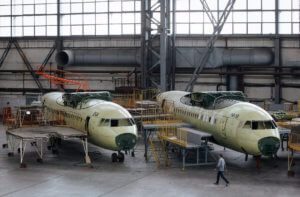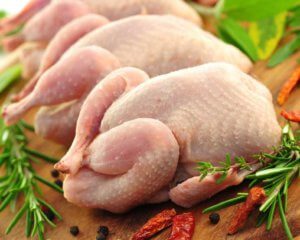
Kernel, one of the largest Ukrainian agricultural groups, in the fiscal year of 2018 (FY, July-June), reduced grain sales by 8.2% compared to the previous FY, to 4.646 million tonnes. According to the company’s website, sales of bulk sunflower oil in the 2018 FY increased by 20.1%, to 1.301 million tonnes, bottled sunflower oil decreased by 9.7%, to 118.6 million liters.
During this period, the holding processed 3.136 million tonnes of sunflower seeds, which is 6% more than in the 2017 FY.
In April-June of the 2018 FY sales of bulk oil increased by 37.3%, to 386,640 tonnes, bottled sunflower oil decreased by 16.3%, to 32.8 million liters compared to the same period last year.
Grain sales in the fourth quarter of the 2018 FY rose by 64.3% over the same period last FY, to 1.573 million tonnes.
Grain transshipment at the group’s export terminals in the 2018 FY decreased by 0.6%, to 6.06 million tonnes, in the fourth quarter it increased by 12.6%, to 1.61 million tonnes.
Kernel is the world’s largest producer and exporter of sunflower oil, the leading producer and supplier of agricultural products from the Black Sea region to the world markets.

Pharmacy sales in Ukraine in the first half of 2018 in monetary terms increased by 36% compared to the same period in 2017 and amounted to UAH 43.011 billion. Business Credit told Interfax-Ukraine that during this period sales in natural terms increased by 5%, to 780.737 million packs.
According to the company, retail sales of medicines in the first half of the year in monetary terms increased by 38%, to UAH 35.454 billion, in natural terms by 16%, to 530.846 million packs.
The average weighted price of all categories of goods of pharmacy retail sales in January-June amounted to UAH 53.8, medicines some UAH 66.8, the increase compared to the first half of 2017 amounted to 30% and 19% respectively.
In June 2018, pharmacy sales of all product categories in monetary terms rose by 23% compared to the same period in 2017, to UAH 6.256 billion, in natural terms decreased by 2%, to 116.249 million packs. Sales of medicines in money terms grew by 25%, to UAH 5.101 billion, in natural terms by 6%, to 76.338 million packs.

America’s Boeing will supply components for the family of Ukraine’s regional new generation An-148/158/178 planes developed and produced by Ukraine’s state-owned state Antonov concern based in Kyiv. At Farnborough Airshow 2018, Antonov and a division of Boeing – Aviall Services, Inc. – signed a general terms agreement for cooperation in the production of the modernized An-148, An-158, An-178 aircraft, the family of which will be designated as “An-1X8 NEXT,” Antonov said on Facebook.
“Within the framework of this cooperation, Aviall Services, Inc. will ensure the procurement and delivery of a wide range of components for the serial production of these aircraft and the provision of their post-sales support,” the post says. “As a result of the agreement with Aviall, Antonov has a reliable partner, which will become an important integrator in the process of acquiring a number of western-made components within the import substitution program, including the launch of the serial production of the newest An-type aircraft and post-sales support,” the post says, quoting Antonov President Oleksandr Donets.
The An-178 is being created to replace the An-12, according to experts, who say it may become a modern replacement for the French-German C-160. The aircraft has a modified fuselage shape, a ramp for loading and unloading oversized cargo and is capable of carrying up to 18 tonnes of cargo, including heavy-duty sea containers.
About 200 companies from 15 countries are involved in production cooperation under the An-178 program. Antonov is promoting the An-178 program, including in the Middle East and Central Asia. The UAE, China and Azerbaijan have already shown interest in the new Ukrainian transport carrier. The debut show of the An-178 was held at Le Bourget 2015 (Paris, France), where the new Ukrainian carrier became one of the main events, as well as at the regional Dubai Air Show 2015 (UAE), where it was showcased. According to the sources of the Kyiv-based Interfax-Ukraine news agency, Antonov is also negotiating the joint development of the An-178 program with European members of NATO.
State Enterprise Antonov is a leading Ukrainian developer and manufacturer of aircraft equipment, a recognized world leader in the manufacture of transport aircraft. Under a government decision, the enterprise in 2015 was incorporated in state-owned Ukroboronprom Concern.
Farnborough is one of the largest and most prestigious world specialized exhibitions of civil and military aerospace products. According to organizers, more than 15,00 exhibitors from 52 countries are showcased at Farnborough 2018, which is taking place in the suburbs of London on July 16-22.
Ukraine’s new transport An-178 with a payload capacity of 18 tonnes is demonstrated at the air show.

President of Kyivstar, Ukraine’s largest mobile operator, Peter Chernyshov, is reportedly resigning, an informed source in the Ukrainian telecoms market has told Interfax-Ukraine. According to information sent by the company to the Agency for the Development of the Stock Market Infrastructure, Chernyshov was re-elected as president of Kyivstar from July 14, 2017 to July 13, 2018.
Previously, Chernyshov had already informed journalists that his contract was expiring, but he did not comment on further plans.
Chairperson of the Ukrainian Telecommunications Chamber Tetiana Popova notes that the end of Chernyshov’s contract with Kyivstar does not necessarily mean that he is leaving the VEON group.
“He is not only president of Kyivstar, but he is also responsible for a number of other regions of the holding. Perhaps, we will see the division of the posts, “she noted.
According to information available to Interfax-Ukraine, CEO at Beeline Kazakhstan Alexander Komarov could be appointed to replace Chernyshov.
As reported, Chernyshov was appointed president of Kyivstar in June 2014 instead of the founder and permanent leader Ihor Lytovchenko. Previously, he had headed Carlsberg in Ukraine.
Amsterdam-headquartered VEON (formerly VimpelCom Ltd.) is a shareholder of Kyivstar.

Myronivsky Hliboproduct (MHP) sold 153,140 tonnes of chicken meat to third parties in April-June 2018 (Q2), which is 3% less than in April-June 2017. Sales of chicken meat in the first half of the year increased by 2%, to 288,440 tonnes, the company said in a report on the London Stock Exchange on Wednesday.
Poultry production volumes in Q2 2018 increased by 7% to 155,725 tonnes (Q2 2017: 145,820 tonnes) and in H1 2018 increased by 7% to 307,890 tonnes (H1 2017: 287,694 tonnes), due to increased production of heavier chicken and decreased share of thinning, the report said.